Autopilots are Essential on Most Boats
The autopilot is a ubiquitous piece of electronics that you will find fitted as standard equipment on most cruising yachts these days. They are so common that it is hard to picture going to sea without one. Once you head out to sea, you can switch on the autopilot and it relieves you of the burden of steering the boat while you relax and enjoy life at sea with your friends.
It all sounds so simple and straightforward but please do not take your autopilot for granted and relax too much. You still need to be at the helm keeping a look out and checking that all is well with the navigation. And while you think that the autopilot just takes over the tedium of steering for you it can also do a lot more for you once you fully appreciate its capabilities.
Maintaining Course
The autopilot will do a much better job at maintaining a course than you can when operating the steering manually. It doesn’t get tired and it is not distracted from the job like a human so the boat wanders off course. Using the autopilot will give you time to focus on the navigation, checking on what is going on around the boat and how the crew are faring.
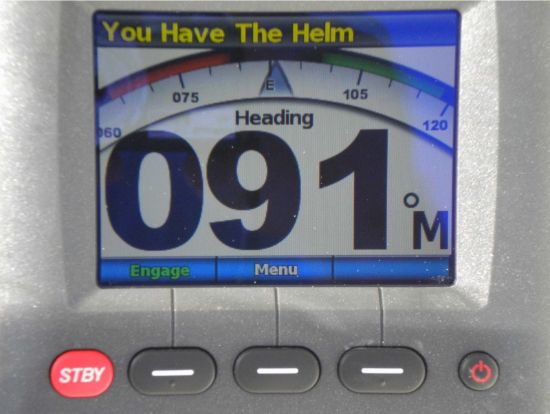
You are not pinned down to the one place at the steering wheel and you have time to look at the scenery, to study the waves and to generally get a much better handle on what is going on and how the boat is coping with the sea conditions. It is also very easy to make small adjustments to the course on the autopilot when you see that the course over the ground on the electronic charts is not quite lining up with the next waypoint. The modern autopilot is one of the major benefits of the use of modern electronics and most of them work well.
That is the basic function of the autopilot, but it can do a lot more. Using the autopilot can save your fuel and it can make the ride of the boat much more comfortable. The use of autopilots tends to be considered to be something that applies to cruising yachts but believe me I have tried them on boats doing 60 knots, I have used them on small RHIBs (rigid-hulled inflatable boats) and I have used them on sports boats and once they are set up properly they will work on all of these applications and offer benefits.
High-Speed Use
I first came across the real benefits of exploiting the potential of the autopilot when we were making our attempt on the Atlantic record with Virgin Atlantic Challenger. As a navigator in fast racing boats and record breakers I did not believe that the autopilot could work at high speeds but we fitted one to this 75-footer and not only did it work but I reckon that we would not have broken the record without that autopilot.
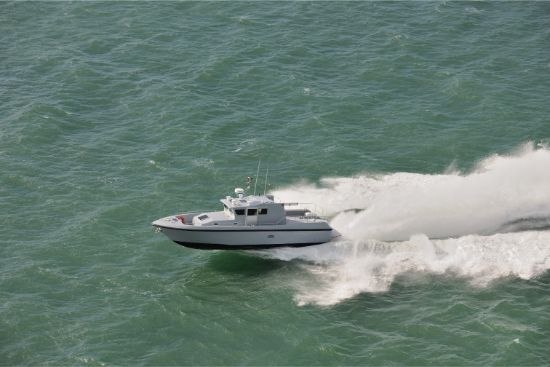
We were on a 3000-mile journey across the Atlantic and I did some calculations, working out how much extra distance we might have to cover with manual steering, allowing for the boat being off course by 5 or 10° or possibly more even when the helmsman was not concentrating. Over 3 days there could be considerable periods of loss of concentration and my sums reckoned that we would be covering an extra 150 miles or more with these deviations from the course compared with following the straight line.
Fuel Savings
As we got increasingly tired it was likely that the course deviations would be even greater, so it was a no-brainer to use the autopilot for the steering. We broke the record by just two hours which at 50 knots was 100 miles less than the distance saved by the autopilot.
So yes, by using the autopilot and keeping to the narrow straight course line steering it offers you could potentially save yourself quite a bit of fuel. You can also maintain a higher speed because every time you steer off course the boat slows slightly. However, there is still more benefits to be had from autopilot use.
Smoother Ride
If you are the driver of a boat with a deep vee hull, you will see that when you turn the wheel, the boat heels over into the direction of the turn. Even a slight turn makes the boat heel. This means that instead of the vee of the hull landing nicely and squarely back into the water after a wave, it would land on a flatter surface when the vee hull was heeled over.
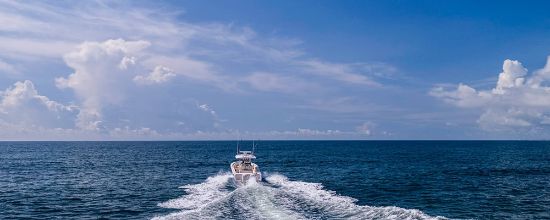
This in turn would give a harsher ride. By using the autopilot, the boat will be kept on course within a degree or two and so will only require minimal helm changes to keep to the course and this in turn means that any heeling will be minimal. Compare this with manual steering where you will almost certainly use larger angles of helm so the boat will heel over more and consequently the ride will be harsher -- another plus for the autopilot.
Autopilots will also work on muscle boats even if they occasionally fly out of the water. I can sense a reluctance to use the autopilot when you are driving at very high speeds, but I have never had any problems and the improved ride comfort can make it all worthwhile. I suppose it is a bit like “driving” an autonomous car where you want to instinctively hold the wheel.
Harbor Entry/Exit
I also use the autopilot going into and coming out of harbor. This is a time when you need to concentrate on what is going on around you, a time when the navigation can be under pressure and where there is increased risk of collision so you need to focus on what other vessels around you are doing. Trying to do this and to concentrate on the compass and/or steering the boat and you can soon reach a state of overload and you don’t do any of these tasks properly.
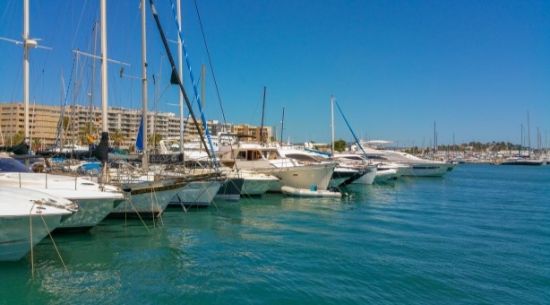
Using the autopilot can at least relieve you of having to concentrate on the compass (or a chartplotter) and with the right design of autopilot it is very simple to adjust the course and let the autopilot hold the heading on the new course. A joystick control will often give you the same effect when you press the button on the top of the joystick and the current course is maintained.
Proper Design
So, let’s have a look at autopilot design because if you are going to use it effectively then it needs to be designed to meet certain parameters and many modern designs do not work effectively. First, you need to be able to switch from autopilot to manual control quickly if you suddenly see something close ahead that you want to avoid such as floating debris or perhaps breaking waves.
So often it can be hard to find the standby switch that performs the on and off control to switch back to manual steering. Even in daylight the switch is rarely prominent while it can be a real problem at night when the push button is not illuminated, and you need to find it quickly. On Virgin Atlantic Challenger we had the system modified so that the on/off switch was a big red button on the dash that gave you back control.
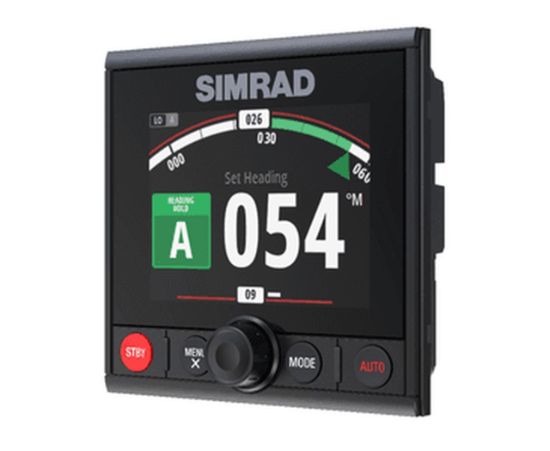
Second, there is the question of how you alter the course when under autopilot control. So often there are two select buttons, one giving an alteration of 1° which allows you to fine tune the course and the second one usually gives you a 5 or 10° alteration in one go. You can get used to these but particularly when you are entering harbour, I find it much better and easier to have a rotating knob for course control.
Then you can operate it just like a mini-steering wheel and that works fine. I often get the feeling that the autopilot designers do not have practical experience of using the system at sea, particularly at night when I see no illumination of that critical on/off switch, so you have to find a flashlight to locate the switch.
Used with a Chartplotter
There are various ways in which you can link up your autopilot to the chart plotter so that the system automatically follows the line on the chart. That sounds like a fine solution, but it takes one step of control out of your hands. Personally, I like to make these small corrections myself so that I know what is going on and whether the wind or the tide are setting you off course. At least when you do them manually you have to look at the chart display and check what is going on, unlike when you use automatic corrections which means that you have less concentration on what is happening.
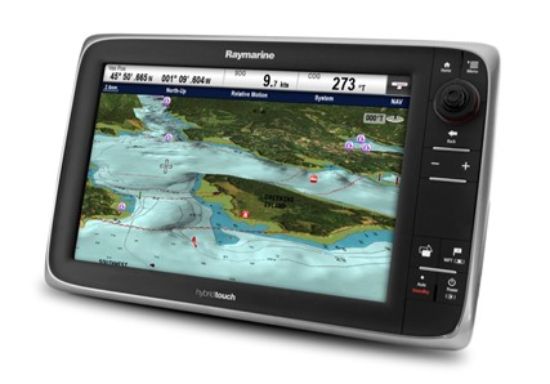
Putting in Way Points
You can get even more automation by setting up a route on the chart plotter to get you from one port to the next. Connect the autopilot and tell it to follow that route and in theory you can sit back and relax and just wake up when the alarm sounds. I would never contemplate allowing the autopilot to make any significant changes in course without human intervention.
Before any alteration you need to look around to see what other vessels may be in the vicinity so that your alteration in course does not bring you into conflict with the others. You can also get auto-routing where you let the electronics take over the whole thing, setting the course and then getting the autopilot to follow it but that is another story.
We don’t recommend putting more than one or two course changes even if you are keeping a sharp lookout. Punching in a long list of course changes can bread complacency and inattention, and the next you know there is an accident.
Perhaps the most important thing about an autopilot is that it becomes an extra crew member. With one, single-handing becomes remarkably easy.
The autopilot is a wonderful tool and these days I would not like to go to sea without one. It can make life at sea so much more pleasant and safer and there can be considerable benefits, but you do need the right equipment and you do need to use it intelligently. Set up properly, the autopilot can bring so many benefits.